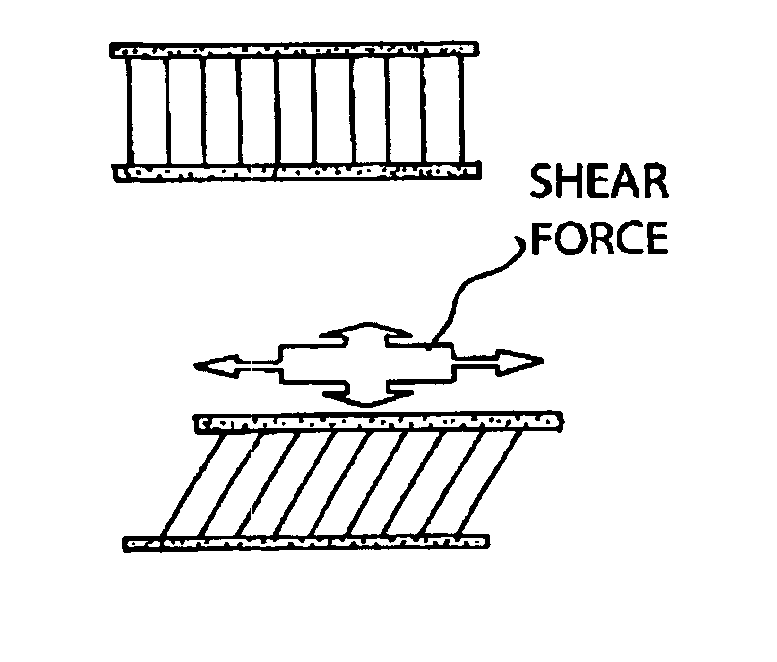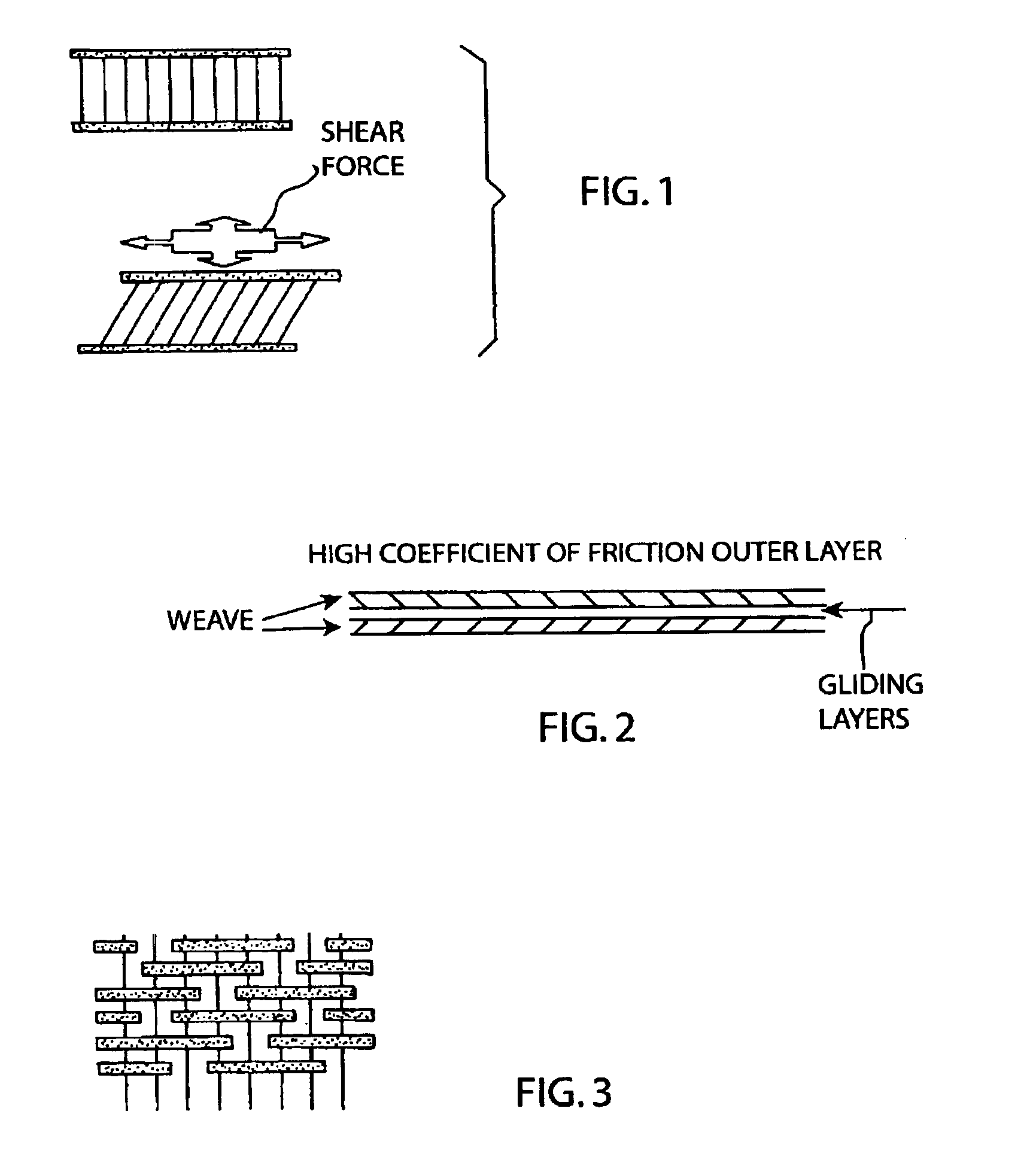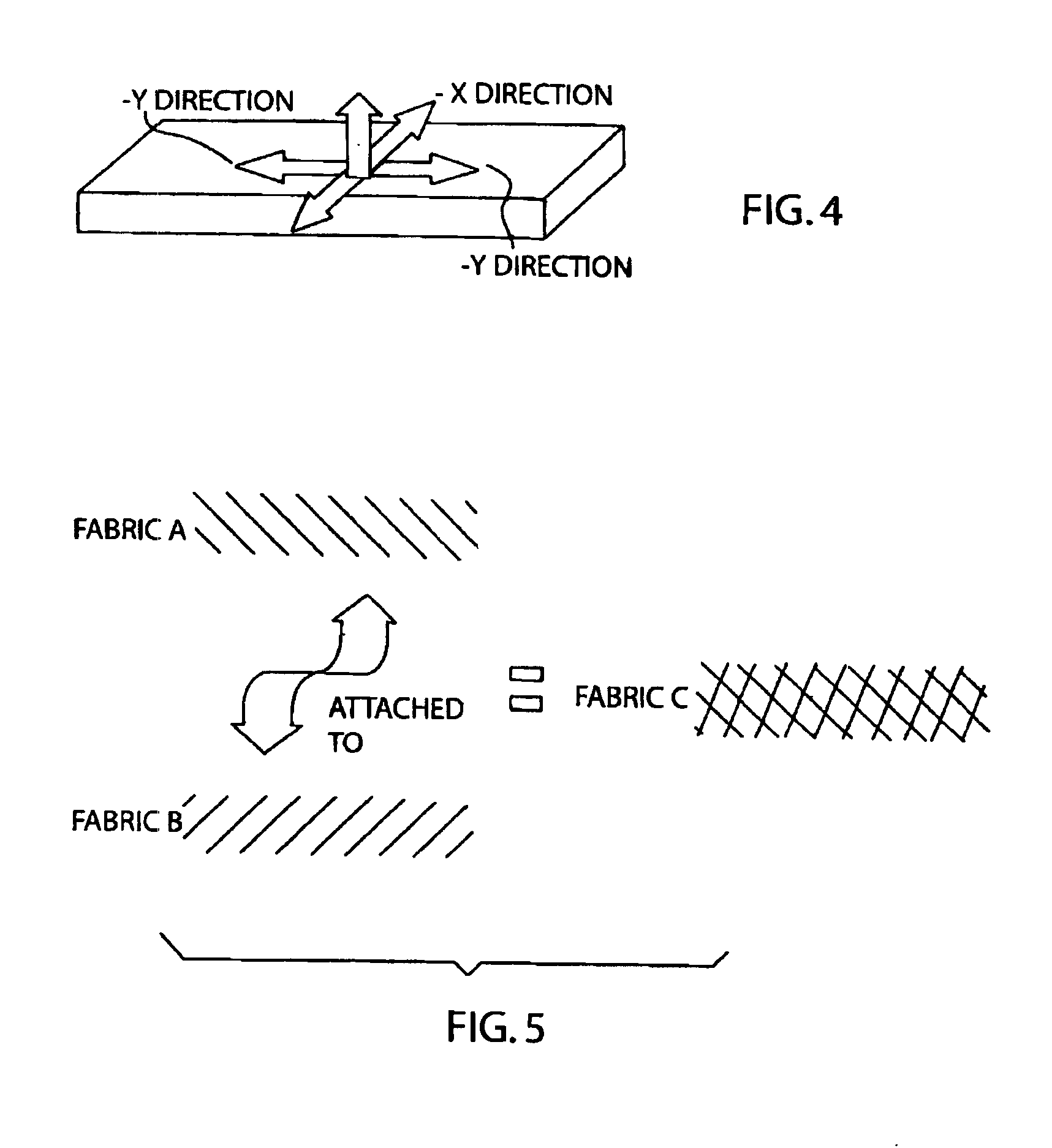Low friction fabric
- Summary
- Abstract
- Description
- Claims
- Application Information
AI Technical Summary
Benefits of technology
Problems solved by technology
Method used
Image
Examples
example i
[0037]The cloth was placed between the heel and a Bertec force plate sampling at 120 Hz. The two components of the shear force is separated into an ±X medial to lateral (side to side) and an ±Y anterior posterior (front to back) component with respect to the force collection plate. The positive and negative values only indicate direction of the force with respect to the center of the plate (as seen in FIG. 4).
EXAMPLE II
[0038]Using a TMI (Testing Machines Inc.) Model 32-06 Slip Friction Tester was calibrated and was running in an environment of 72 degrees Fahrenheit at 40% humidity. The following test was performed:
[0039]An 8.5-cm by 33-cm sample of the fiber was fixated to the bed of the test unit. A 6.5-cm by 6.5-cm sample of the fiber was then fixated to the sled of the test unit with the fibers oriented in the same direction as the fibers on the test bed of the unit. This was designated as a 0 (zero) degree orientation. A test for static and dynamic coefficient of friction was th...
example ii
[0042]This represents a 50% reduction in the friction.
[0043]The graph of FIG. 6 shows the shear reactive force being applied across the heel for a period of time with the same fiber render two different alignments. Fibers oriented at zero are aligned while those indicated at 90 are orthogonal to each other.
PUM
| Property | Measurement | Unit |
|---|---|---|
| Angle | aaaaa | aaaaa |
| Angle | aaaaa | aaaaa |
| Angle | aaaaa | aaaaa |
Abstract
Description
Claims
Application Information
 Login to View More
Login to View More - R&D
- Intellectual Property
- Life Sciences
- Materials
- Tech Scout
- Unparalleled Data Quality
- Higher Quality Content
- 60% Fewer Hallucinations
Browse by: Latest US Patents, China's latest patents, Technical Efficacy Thesaurus, Application Domain, Technology Topic, Popular Technical Reports.
© 2025 PatSnap. All rights reserved.Legal|Privacy policy|Modern Slavery Act Transparency Statement|Sitemap|About US| Contact US: help@patsnap.com



